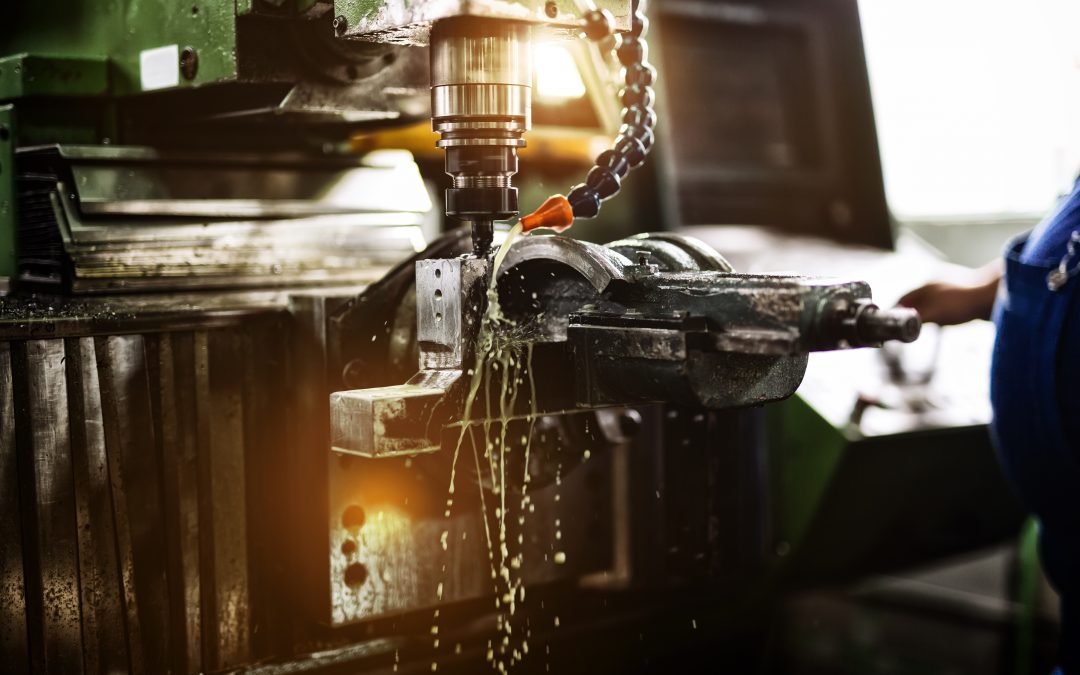Choosing the right metalworking fluid is an important part of keeping machinery in good condition. Adding the coolant to the reservoir is only step one; step two is managing the coolant so it doesn’t need to be changed as often — something that is especially important when it comes to keeping costs down. To get the most out of your coolant, here are some best practices for maintaining it and extending its life.
Manage concentration
Most problems with coolant have to do with concentration control and regular daily coolant makeup. But by paying attention to both, most problems can be eliminated. In many cases, water-based coolants have a working solution of less than 10% — the product typically is 90% water. If the concentration gets too low, it won’t properly lubricate and cool the cutting tool, prevent rust, or fight off bacteria.
To keep the concentration at the correct levels, proper daily adds of coolant at the right make-up concentration are necessary. Additionally, since evaporation and carry-off are constantly happening, machine sumps must be refilled regularly. Adding a little fresh coolant with the water will replenish the properties of the product.
Use proper filtration
The use of proper filtration in today’s machining environment can’t be overlooked. Many of the CNC machines used today offer “through tool” coolant applications, which means that coolant flows through the machine spindle and cutting tool. Without filters, materials from the sump can get in and block the coolant flow and destroy seals.
How often the filter is changed depends on the material being machined and the type of cutting being done; for example, cast iron creates a fine, muddy substance that quickly clots filters. Other materials may allow coolant to flow even when the filter bag is full. Most high-pressure systems will have gauges showing pressure differential and restricting coolant flow when the filter is full.
Remove tramp oil promptly
Hydraulic, spindle, and way lubricating oils from machines leak constantly into the sump, creating a welcoming environment for bacteria that can degrade the coolant. While today’s coolants are designed to reject tramp oils and cause them to rise to the surface, if they’re not removed, they can emulsify and negatively affect the coolant’s performance. Tramp oil needs to be removed as soon and often as possible. Belt and disk skimmers work well when the machine is shut down. For machines that never shut down, coalescers and high-speed disk bowl centrifuges are recommended.
Keep fungus and bacteria in check
A fungus is difficult to remove, and it can cause problems with how the machine itself functions. While bacteria can be kept at bay with good concentration control, regular sump cleanings, and tramp oil removal, a fungal issue may require the use of a fungicide.
Bacteria is the enemy of coolant, and it flourishes in piles of chips and sludge on the bottom of a sump. Most coolants have a recommended pH range that is ideal for fighting bacteria. Some coolants have a lower pH range because they’re designed for sensitive materials, so the coolant needs to be checked and may require additives to inhibit bacterial growth. Additionally, pH adjusters may be needed in large central systems that go for long periods without being cleaned.
Clean machine sumps regularly
It can’t be stressed enough; machine sumps need regular maintenance for best coolant performance. Not only do bacteria thrive in dirty sumps, but dirty sumps also result in clogged pumps and false coolant levels. There have been cases of 200-gallon sumps that are so full of chips that the actual amount of coolant in them was about 75 gallons. This makes the coolant run hotter, encourages bacteria to grow, and can also cause foam due to pump cavitation and low retention times.
Being able to extend coolant life will lead to a lower cost per part and save money and time on the shop floor. It will also protect the machinery and employees from coolant-related problems. Paying attention to filtration, removing tramp oil, eliminating fungus and bacteria, and cleaning sumps regularly can go a long way toward extending the life of the coolant.
If you have any questions or need help creating a fluid maintenance plan, call +1 800-537-3365 or email us at info@masterfluids.com.

